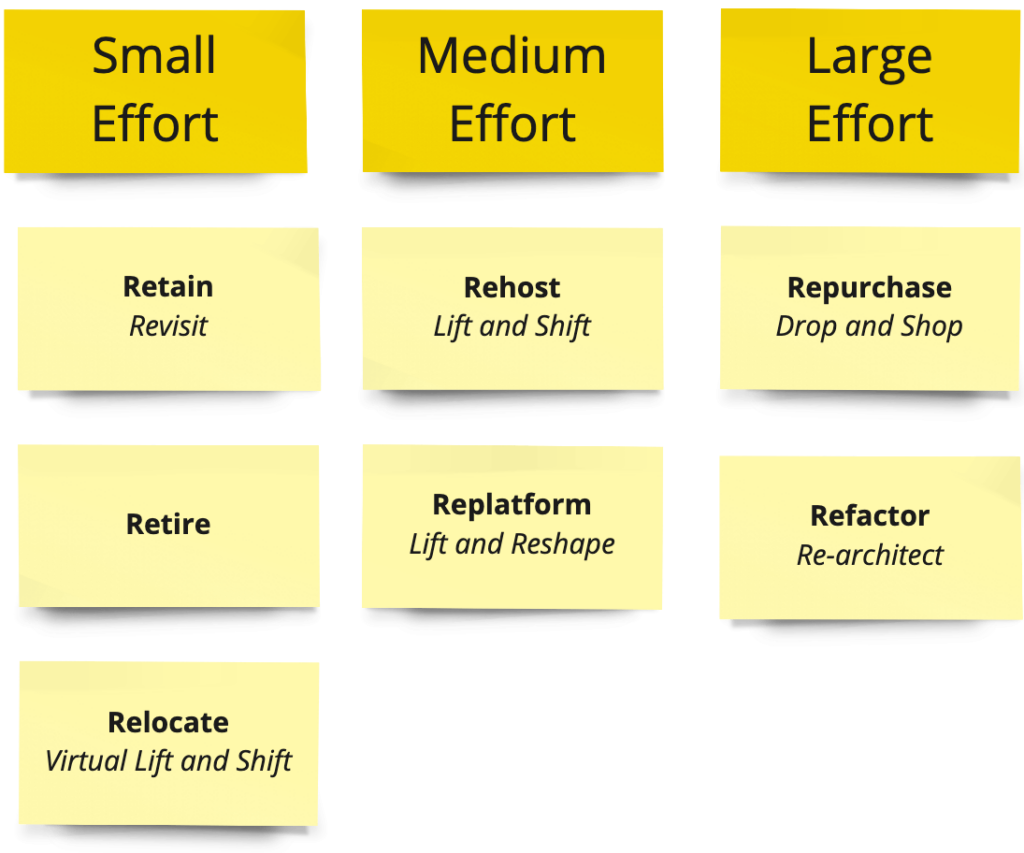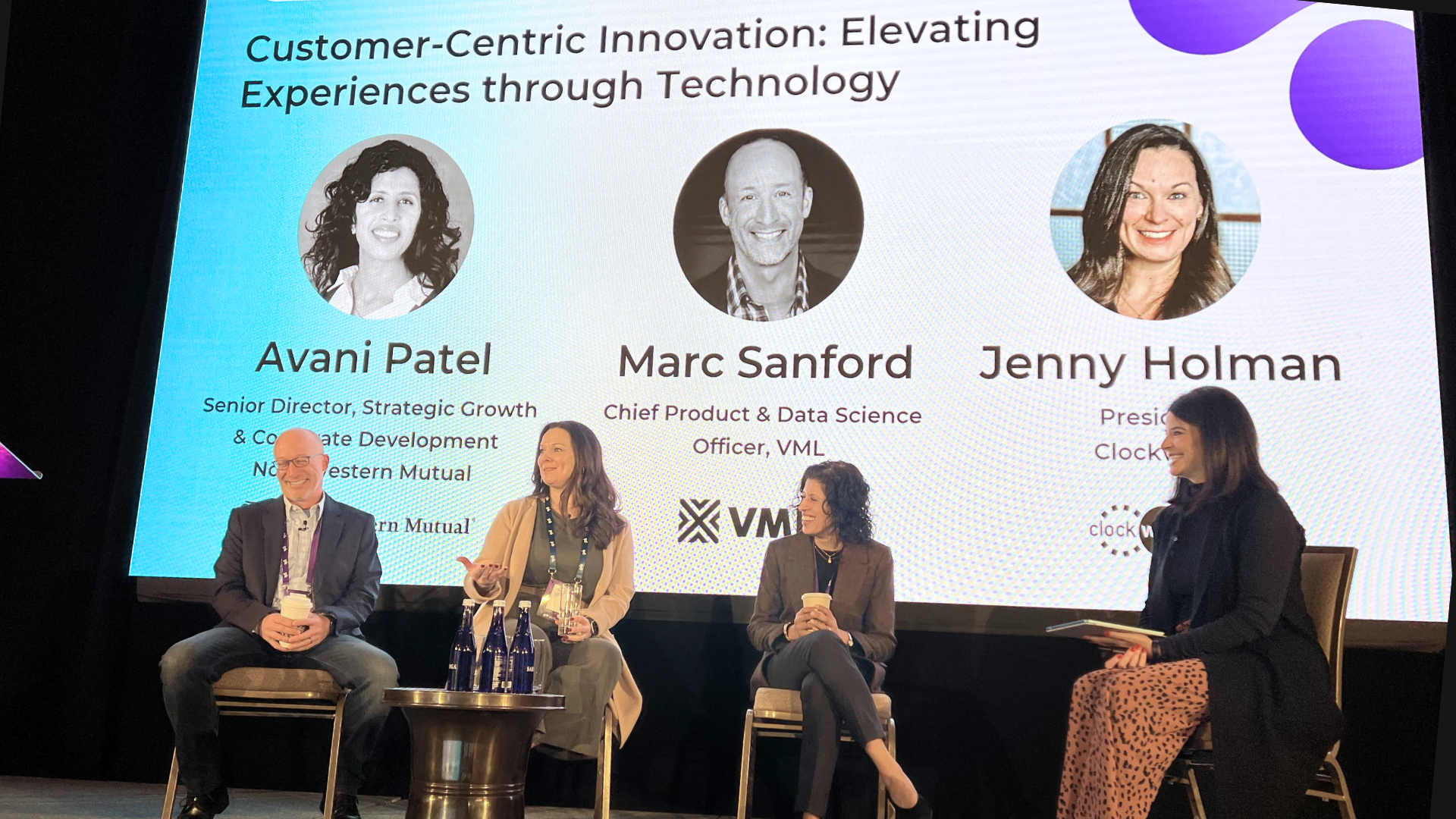Previously, we explored the concept of migrations as a process for transferring systems and data to new computing environments.
The complexity of migrations varies widely and understanding the intricacies of your migration can help you make the business case for system upgrades. Factors like system readiness, compliance, integrations, organizational and data readiness, and future improvement goals influence the complexity.
Additionally, we highlighted that successful migrations often extend beyond IT; cross-functional collaboration and robust change management are necessary.
Migration types and their relative size
The image on the right shows the seven migration types, and their general effort relative to each other.

Migration types vary greatly due to the various technologies and customizations used to meet business requirements. This can add to confusion when discussing migrations and what they might mean to a business.
Let’s explore seven categories of migrations and how they relate:
Retain (Revisit)
Surprise! Retain is not actually a migration but a decision made during the migration planning process.
When evaluating a portfolio of applications and systems, “Retain” represents the choice to keep certain assets in their current state and environment (at least for the time being). It’s an acknowledgment that not all systems or apps need to be moved during the migration process.
So, while “retain” is a critical part of the overall migration strategy for an organization, it’s not a migration method in itself. “Retain” is a strategic choice to avoid migration for certain systems or applications.
Retire
Retiring is about strategically discontinuing a legacy system. This is a strategic choice for systems that no longer serve business objectives or are too costly to maintain given the value they provide.
Think of it as phasing out an outdated marketing channel that no longer reaches your target audience effectively. This approach helps declutter the digital environment, reduce costs, and reallocate resources to more impactful business initiatives.
Rehost (Lift and shift)
We commonly use the phrase “Lift and Shift” in tech spaces. Often, we use it instead of the more general term “migration”.
In a rehost migration, existing applications and data are moved (“lifted”) from their current environment, often on-premises data centers, and relocated (“shifted”) to a new environment, typically a cloud-based infrastructure.
It’s important to understand that not all rehosting processes are straightforward. Some of these migrations can be simple, while others can be quite difficult. How difficult depends on the factors described in Part 1 of this series.
Examples of rehost migrations:
- Simple: moving a WordPress-based website from an on-premise server to a cloud-based service designed for hosting WordPress.
- Complex: moving a highly integrated, custom-built, legacy application that requires custom hardware.
Regardless of the complexity of the migration, planning, and evaluation are crucial. This is true even for seemingly straightforward rehosting projects.
Relocate (Virtual lift and shift)
Relocate is a special type of rehost (lift and shift) migration. It requires your organization to already be using virtual servers and entails moving them from one location to another. This could be from on-premise to the cloud or from one cloud service to another. The new location must support the same virtualization technology that is currently used.
Relocation is akin to moving a successful marketing operation to a more strategically advantageous location without changing its winning formula. This strategy can optimize costs, improve performance due to closer proximity to our audience, and enhance data compliance. And it can do this all without disrupting the existing marketing ecosystem.
Replatform (Lift and reshape)
Replatforming involves upgrading existing digital platforms to enhance functionality without a complete overhaul. It strikes a balance between the minimal changes of a rehost strategy and the extensive modifications of a refactor strategy.
Unlike rehosting, replatforming includes optimizations and minor code alterations to take advantage of new capabilities in the target environment. It’s similar to tweaking the messaging of an already successful marketing campaign to align with new market trends.
This migration strategy allows us to leverage new technological capabilities, like improved analytics for better customer insights, while maintaining the essence of our existing digital assets.
Repurchase (Drop and shop)
A repurchase migration involves replacing an existing legacy application or system with a commercially available off-the-shelf product. This strategy often entails moving to a Software as a Service (SaaS) model or adopting a new platform that better fits current needs. It is the digital equivalent of updating our marketing toolkit with new, more advanced software solutions.
This strategy can bring cutting-edge functionality, streamline operations, and improve marketing efficiency. It’s an opportunity to modernize tools and processes.
These types of migrations are frequently a lot of effort. They usually require a detailed roadmap as the legacy system is retired and the new system is launched. In addition to the technical effort, this migration often requires a fair amount of change management work to ensure the successful adoption of the new system.
Refactor (Re-architect)
Refactoring is the process of fundamentally redesigning digital systems to be more flexible, efficient, and aligned with modern technologies, such as cloud-based services. It’s similar to reimagining a core marketing strategy to be more responsive to real-time data and market changes.
This approach is often the most resource-intensive. However, it can lead to significant long-term benefits like increased agility and adaptability to new opportunities or challenges.
Choosing the right migration path: balancing needs and goals
Choosing the right migration strategy hinges on a variety of factors unique to your organization. Each approach offers distinct advantages and challenges. The key is to align your choice with your organization’s current infrastructure, your customer’s experience, future objectives, budget constraints, and the desired level of cloud integration.
Remember, it’s not just about moving to the cloud. It’s about transforming your organization in a way that unlocks new potential and drives forward your business goals. Careful evaluation, a clear understanding of your needs, and strategic planning are your best allies in making this crucial decision.
Sounds simple, right? We can help.




